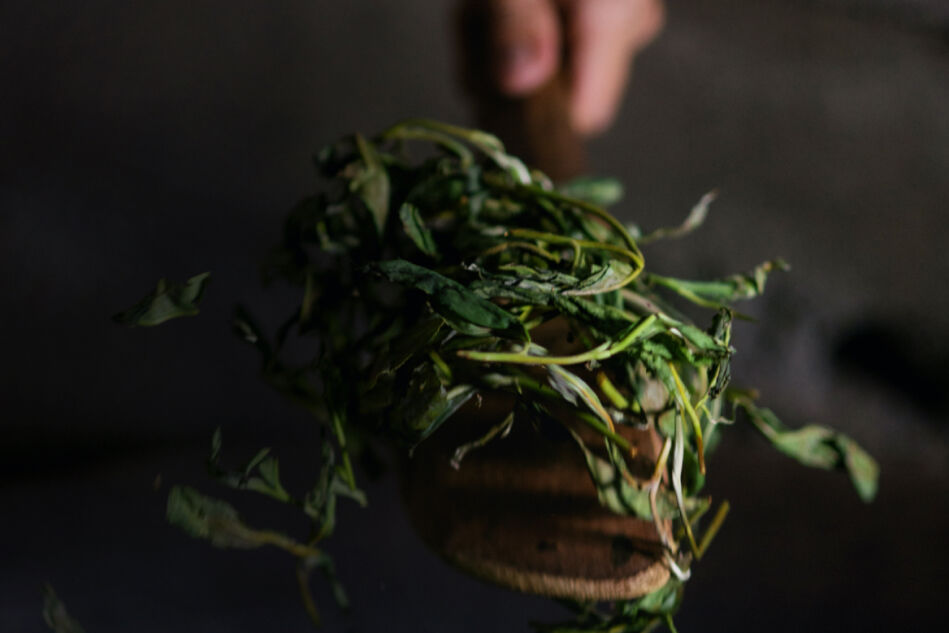Smooth and flavourful
The role of withered leaves in the production of tea.
From dried flowers, shrunk plants and beauty long past...
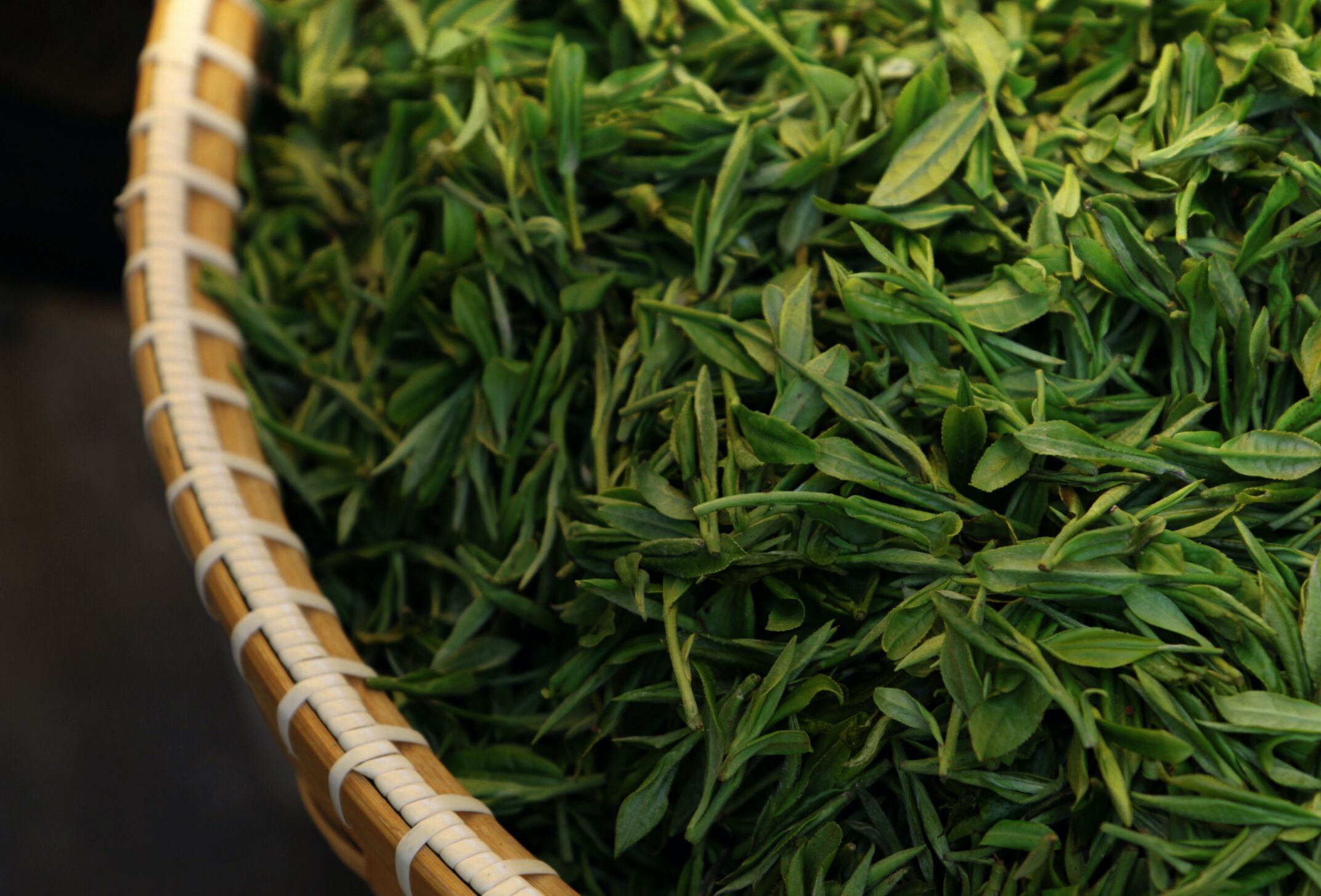
Dried flowers, shrunk plants and beauty long past – the concept of “withering” or “wilting” tends to generate a negative image in our minds. But withering plays a central role in tea production: instead of drying the leaves, it softens them. We’ll explain the chemical processes behind this, and reveal why this also increases the caffeine content, among other things.
After the leaves of the tea plant have been harvested, they are processed further. Traditionally, tea leaves go through five steps before they can produce a tasty infusion. The process starts with withering. In a similar manner to cut flowers or freshly mowed grass, tea leaves start withering as soon as they have been plucked from the tea plant. In professional tea production however, withering is done on purpose and is controlled by influencing temperature and humidity.
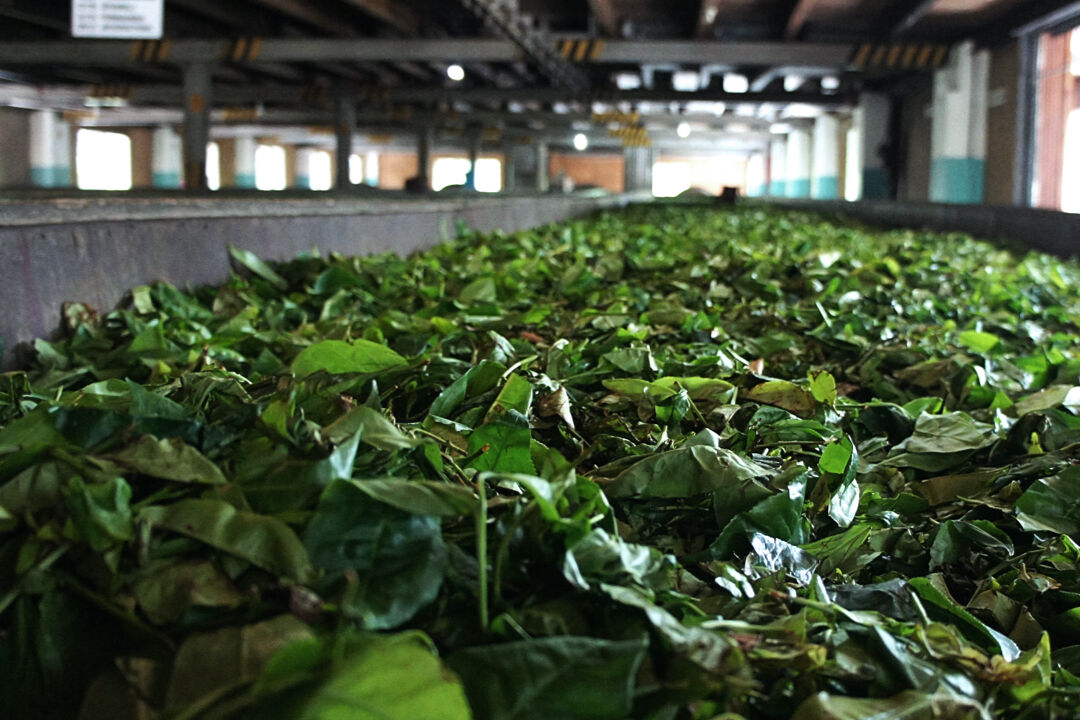
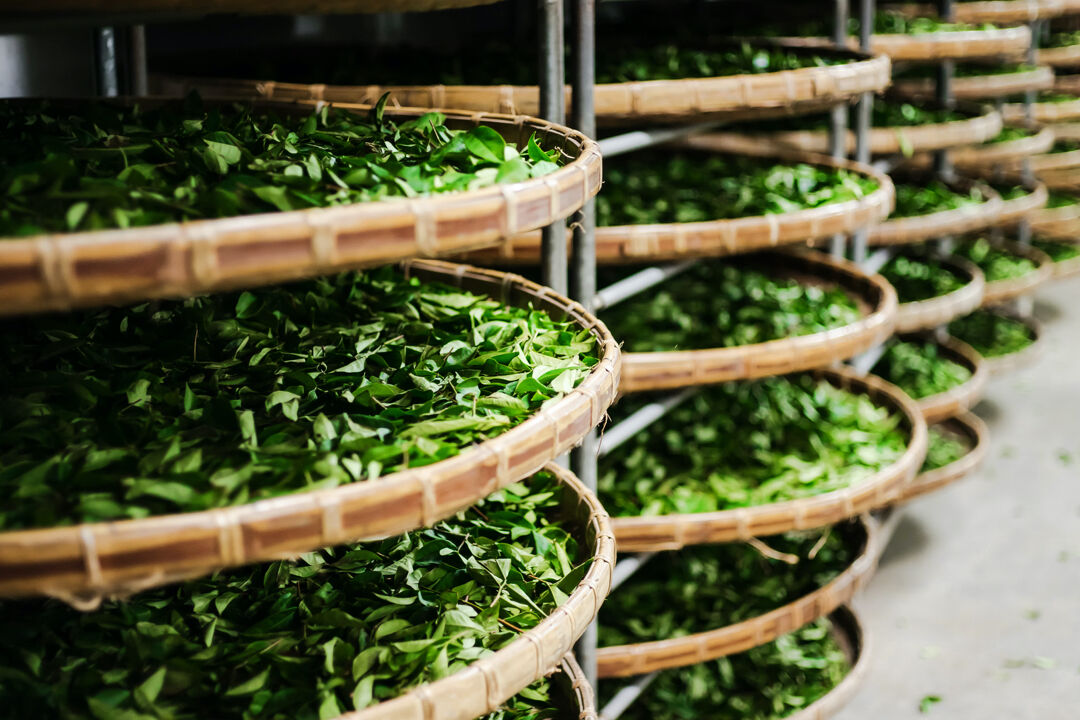
In times gone by, withering was often done in the open air. The tea leaves were spread out on bamboo mats or sheets. The process has now been modernized and usually takes place in factories. The freshly picked leaves are spread out evenly on grids in withering throughs that are 25 to 30 metres in length and are aerated from various directions using large ventilators. The process can take an entire day, depending on the ambient temperature and humidity.
The leaves are weighed twice to determine whether the withering process can be ended: first when the fresh leaves enter the factory and then again 10 to 20 hours later. While fresh tea leves contain 73 to 80 percent water, the withering process causes them to loose about 30 percent of their moisture and thus also some weight. This makes the leaves go limp, but also more supple. Why is this the case? The withering process causes the membranes of the tea leaves to open, making them more permeable and at the same time softer. The advantages of this are primarily of a practical nature: During the production step that follows, the leaves can be more easily rolled and do not break. It also means that the machines remain clean and fully functional. If the leaves were still too moist they would stick to the machines and, in the worst case, bring them to a standstill.
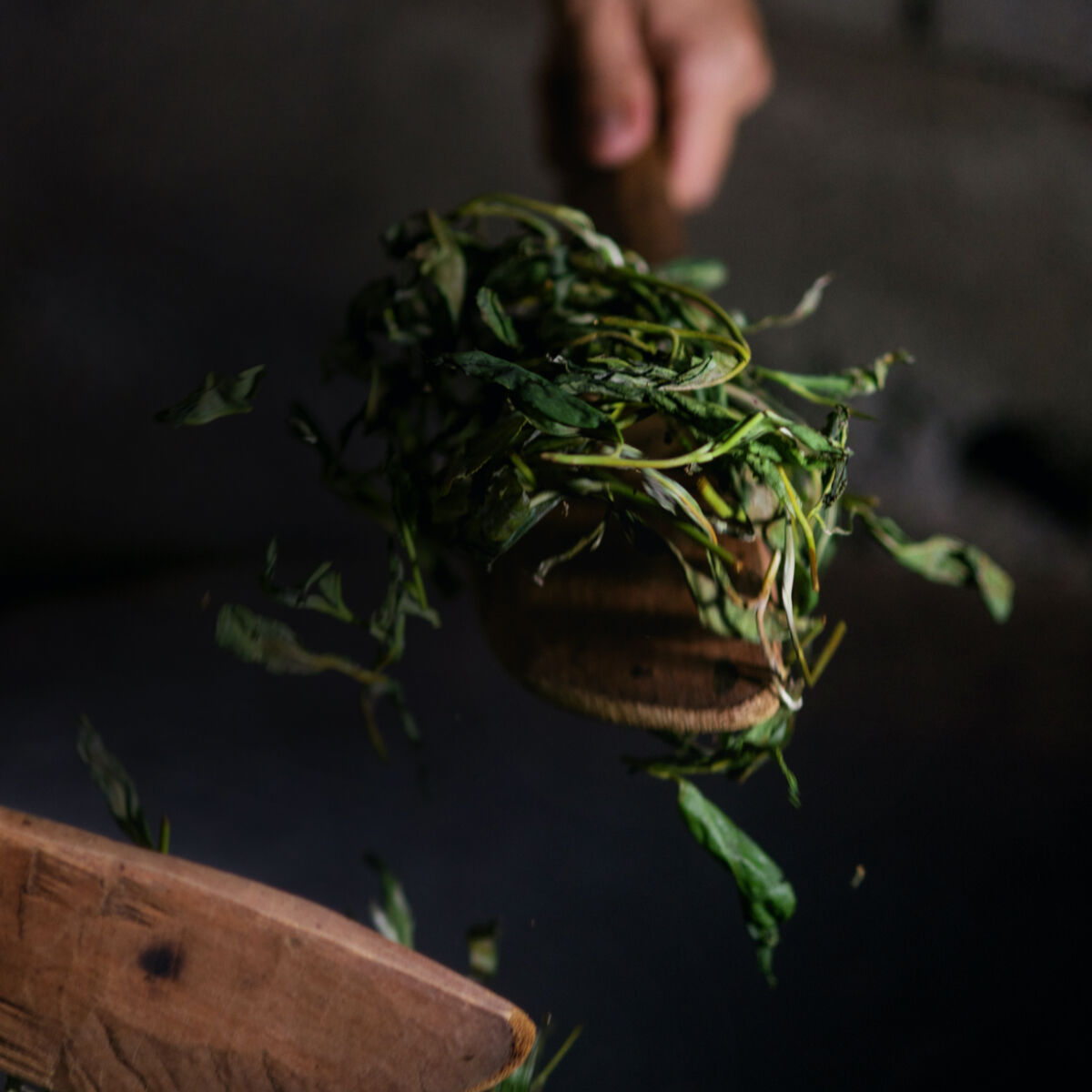
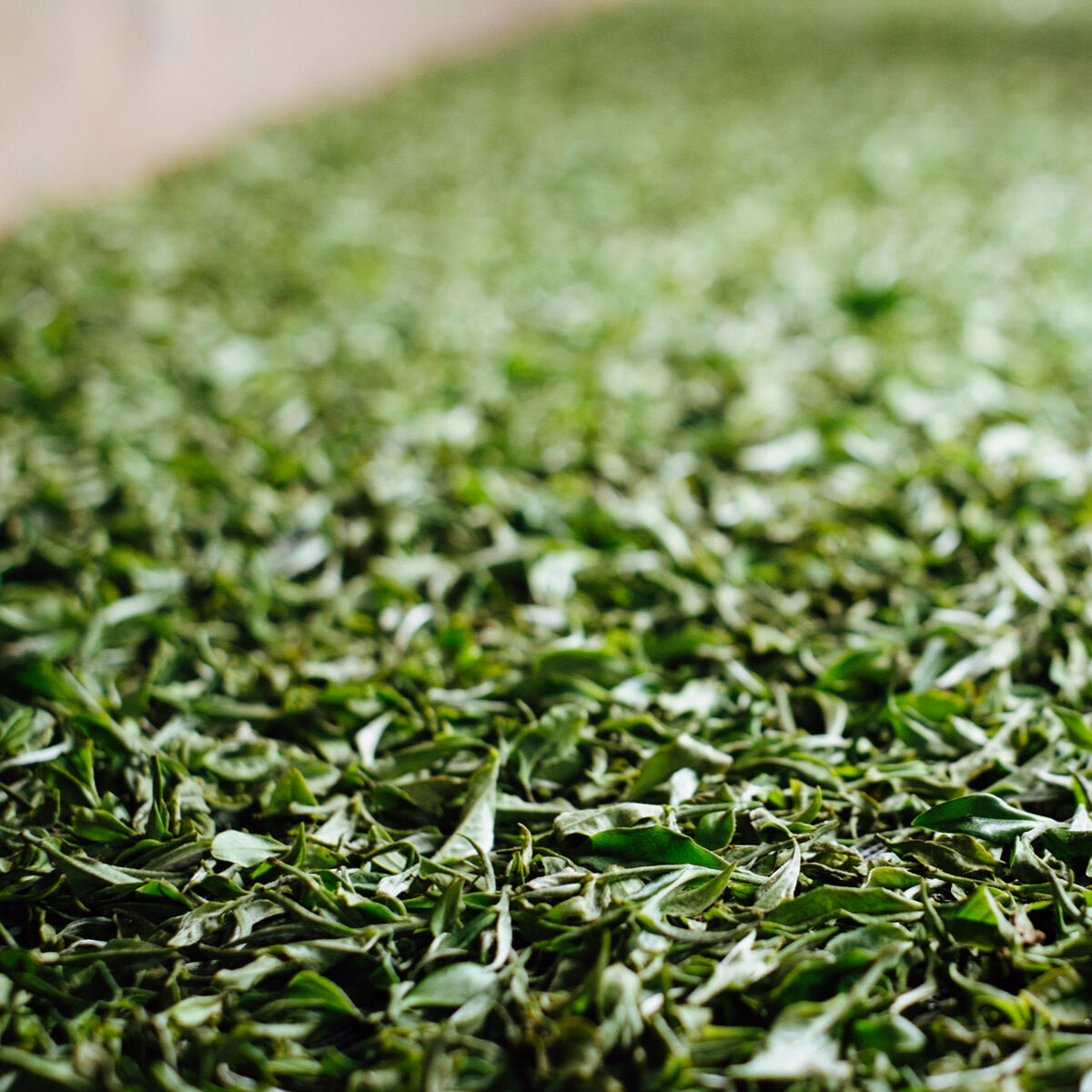
The withering time can also be used to store the fresh leaves to bridge the time to subsequent processing. During so-called “chemical withering”, the leaves are not aerated on an ongoing basis but are subjected to cool air from time to time. No chemicals are added to the leaves in this process – even if the name suggests otherwise. Instead the name “chemical” refers to the chemical changes that occur naturally in the leaves. Because: It is not just the structure of the leaves that changes. It’s also their composition The caffeine content also increases, particularly in the case of black tea. The more effective the withering process, the more invigorating the finished tea product.
New flavours also develop over the course of time. This is because many of the chemical compounds in the leaves disintegrate into volatile compounds and aromas during the withering process. So, if you were to take a walk through a tea factory, you would experience a pleasant fragrance. Skilled tea producers therefore know when the withering process is complete – not only because of the weight of the leaves but also because of their sense of smell.
From grassy to floral.
Withering plays a key role, particularly in black tea, but also impacts on the unmistakable aroma of other types of tea. Pu-Erh-tea is only withered for a short period of time and green tea often not at all. This is reflected in the taste, since the chlorophyll content of the leaves is reduced during withering. So the shorter the withering time, the greener the appearance and the more grassy the aroma. If the leaves are withered for a longer time, the colour in the cup becomes darker and the aromatic compounds more intense, giving rise to a sweet, floral infusion.
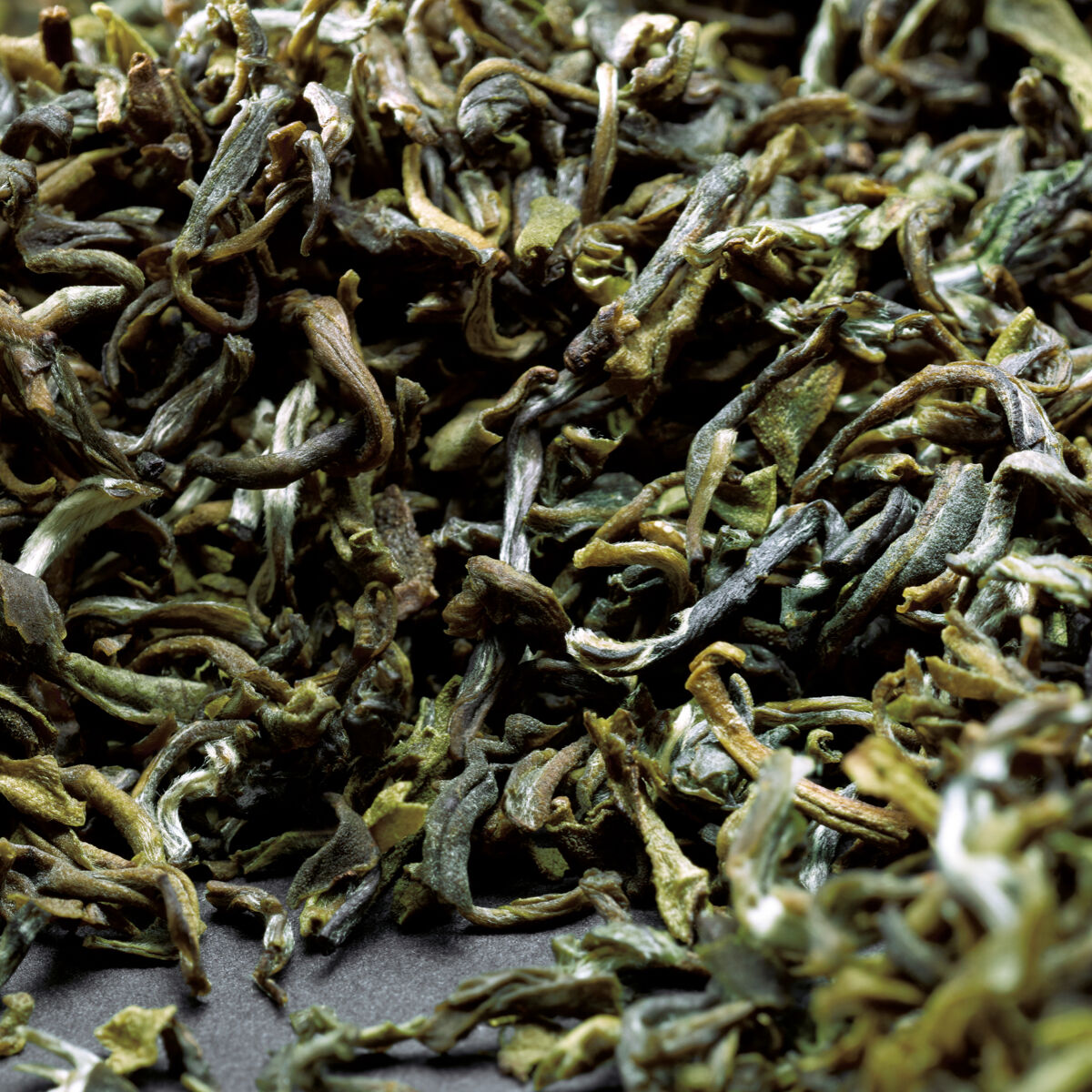
More articles
More articles

Not less, but better.
Sharpening one's own awareness. Recognizing what one really needs. Giving things new appreciation. That's what minimalism is about. Following the motto 'less is more', more and more people are embracing the desire for clarity and order – even in the design of their homes.

Should we always follow our nose?
23,000 times – that´s how many breaths we take on average per day. And that means a multitude off different scents float in through our nose evoking a wide variety of reactions in us. In this article we´ll explain the psychological reasons behind this and why we should let our noses discover new things more often.
